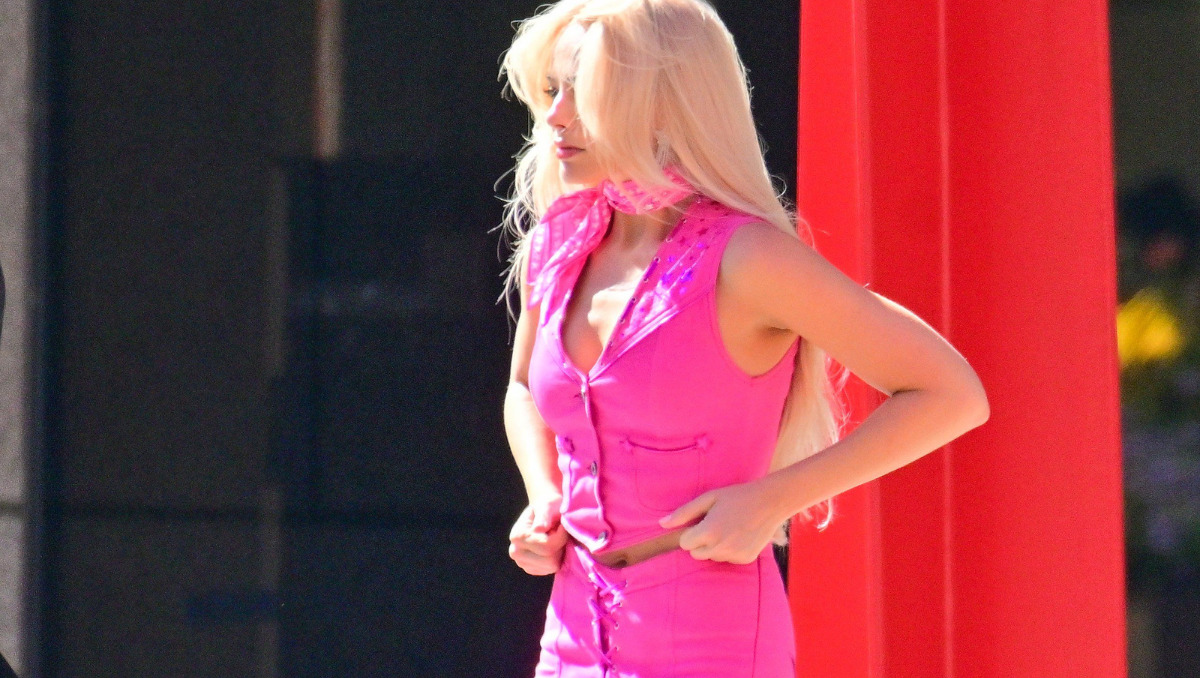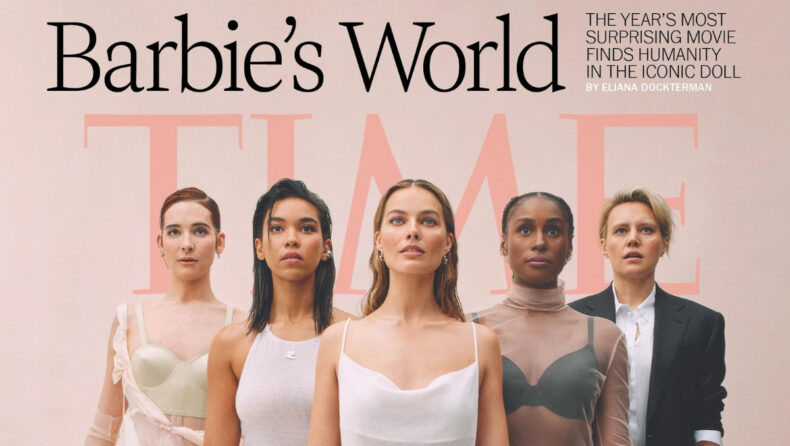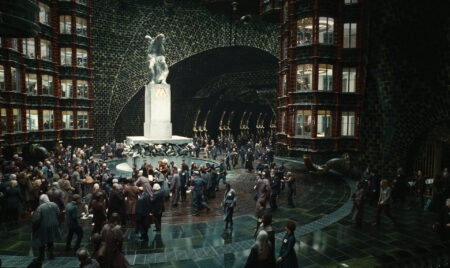Most people had a mental picture of the doll before there was a buzz about the anticipated “Barbie” movie: She was the ideal woman and the popular girl, a perky, white, and perpetually happy brand. However, many people are unaware about the doll’s complex history.
The much-anticipated ‘Barbie‘ film, directed by Greta Gerwig and written by Gerwig and Noah Baumbach, marks the doll’s most recent comeback. It has a stellar ensemble cast, including Margot Robbie as Barbie, Ryan Gosling as Ken, and Will Ferrell as a fictitious CEO of Mattel. In only its opening weekend of July 21–23, the anticipated blockbuster might bring in at least $70-80 million.

She was also the offspring of Ruth Handler, a feisty Jewish businesswoman whose family had fled poverty and racism in Poland. A complex emblem of integration in the United States in the middle of the 20th century, some believe that the original Barbie is Jewish like Handler.
The start of a tale
The youngest of ten children, Ruth Handler was born in 1916 in Denver, Colorado. Like many Jews at the turn of the century, her father, Jacob Moskowitz (after known as Mosko), managed to avoid being drafted into the Russian army and arrived in the United States in 1907. The following year, her illiterate mother Ida came on a riverboat in the steerage area. Blacksmith Jacob relocated his family to Denver, where new railways were being constructed.
Ruth was sent to live with her older sister Sarah because Ida was unwell when she gave birth to the child. Ruth and Izzy Handler first met at a Jewish youth dance in Sarah’s Denver Jewish community when Ruth was 16 years old, according to Robin Gerber, a biographer who wrote “Barbie and Ruth: The Story of the World’s Most Famous Doll and the Woman Who Created Her.” Izzy, a poor art student with a tattered t-shirt, captured her heart right away.
Ruth made the decision to leave the University of Denver at the age of 19 and relocate to Los Angeles, where she worked as a secretary at Paramount Studios. Izzy quickly went after her.
She requested that he alter his name to Elliott while they traveled throughout the nation, according to Gerber. She was deeply convinced that they would be better off with a more Americanized name because she had experienced antisemitism at that time, in the 1930s.
The pair did not give up their Judaism. Instead, they eventually contributed to the establishment of Temple Isaiah in Los Angeles and continued to support the United Jewish Appeal. Ruth, however, was realistic and would never forget how Denver police stopped her car and made anti-Semitic comments.
As President Franklin D. Roosevelt only allowed plastics to be used for military purposes during World War II, their firm faced difficulties. The Handlers changed their focus to creating wooden picture frames and miniature furniture with their friend Harold “Matt” Matson. They were successful, and they gave their business the name Mattel—a mashup of Matt and Elliot.
Matson sold his stake in Mattel in 1946, and Ruth Handler was named the company’s inaugural leader. The business rapidly expanded into toys, producing items like a Jack-in-the-Box, a child-sized ukulele dubbed the Uke-A-Doodle, and toy firearms. Many of its early toys were marketed towards young boys because the design department was completely male.

Ruth had an innovative thought one day as she was observing her daughter Barbara, who would later take on the name Barbie. She noticed Barbara playing with paper dolls and acting like adult women with her friends. The only dolls available in the 1950s were baby dolls, believing that females wanted to pretend to be mothers. However, Barbara and her companions preferred to pretend to be dolls.
She saw Bild Lilli, a slender adult doll, while on a family vacation to Switzerland in 1956. This toy was created as a sexually humorous gift for guys and is based on a sexy comic strip character from the German tabloid Bild. Ruth viewed her as Barbie’s prototype.
The idea of a child-sized adult female doll was so original that Ruth’s husband and even Mattel’s designers rejected it, claiming that moms would never buy their kids a doll with a chest. Ruth persisted until the initial Barbie, dressed in a black-and-white bathing suit and heels, made her debut at the 1959 New York Toy Fair.
Indeed, many mothers complained that the doll was excessively sexual, but their girls adored it. Ruth established a direct line of communication with kids by making Mattel the first toy manufacturer to run commercials on Disney’s ‘Mickey Mouse Club’.
350,000 Barbies were sold by Mattel in the first year. The corporation released her boyfriend in 1961 and gave him the name Kenneth Handler in an effort to keep up with demand.
Something wrong with Barbie?
In the 1970s, feminists criticized Barbie for being too skinny. The slogan “I am not a Barbie doll!” became popular among protestors at the 1970 New York Women’s Strike for Equality. If Barbie were a real woman, according to advocacy groups like the South Shore Eating Disorders Collaborative, her proportions would force her to walk on all fours and she wouldn’t have enough body fat to menstruate.
Barbie, according to Handler, symbolized possibilities for women. Barbie could purchase any dress to suit any career even though women couldn’t get credit cards in their own names until 1974. The release of Astronaut Barbie in 1965—four years before Neil Armstrong’s moonwalk and eighteen years before Sally Ride became the first American woman in space—represented the future in her clothing. Barbie may be dating Ken, but she hasn’t been married or given birth in at least 60 years.
“Barbie has always represented the fact that a woman has choices,” Ruth Handler stated in her autobiography, “Dream Doll: The Ruth Handler Story.” Barbie was not forced to be content with being merely Ken’s girlfriend or an obsessive shopper even in her early years. For instance, she had the attire to begin a job as a nurse, stewardess, or nightclub singer.
However, the debate about whether American Jews could or could not relate to Barbie years before the feminist debate spoke a lot about their position in the country at the time. In 1959, when many Jews were struggling with the idea of assimilation, Handler invented Barbie. In spite of the fact that they endured prejudice after the war, they also had a greater sense of security and a way of life they had never before experienced.

Barbie would paradoxically become central to the American ideal that Jews were perceived to adapt into, much like the classic clothing of Ralph Lauren, a Jewish designer who changed his last name from Lifshitz, or the Christmas carols of Irving Berlin, a Russian Jewish immigrant born Israel Beilin.
Author of “Barbie: 60 Years of Inspiration,” Susan Shapiro, asserts that she thinks the first Barbie was Jewish. According to Shapiro, Ruth Handler, who created Barbie, believed that she had assimilated into American culture and saw herself reflected in Barbie. Barbie’s original form was based on a German sex doll with a “goyishe” look, so she didn’t look like standard Ashkenazi stereotypes, but non-white Barbie ethnicities weren’t presented until the 1980s.
There is no one-size-fits-all Jewish ideology or appearance, according to Tiffany Shlain, the filmmaker of the documentary “The Tribe” on Jews and Barbie, and there is a modern revival of appreciating the variety of outward manifestations of Jewish people.
Whatever American consumers may believe, Barbie has been branded “Jewish” through discriminatory bans. The religious police of Saudi Arabia temporarily barred her in 2003 and declared that “Jewish Barbie dolls, with their clothes that show shameful postures, accessories and tools, are an emblem of decadence to the perverted West.” Since proclaiming Barbies to be anti-Islamic in 1996, Iran has also tightened down on the sale of the dolls on numerous occasions.













